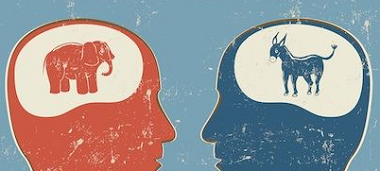from Liberty Street Economics
— this post authored by Olivier Armantier, John J. Conlon, and Wilbert van der Klaauw
Following the 2016 presidential election, as noted on this blog and many other outlets, Americans’ political and economic outlook changed dramatically depending on partisan affiliation. Immediately after the election, Republicans became substantially more optimistic relative to Democrats.

In this blog post, we revisit the issue of polarization over the past twelve months using data from the New York Fed’s Survey of Consumer Expectations (SCE) – also the focus of a detailed technical overview in the latest edition of the Bank’s journal, the Economic Policy Review. The overview walks readers through the design and implementation of the survey, as well as the computation of the various statistics released by the SCE team every month.
The left panel of the figure below shows the percentage of SCE respondents who say they expect to be better off financially a year from now (note that all charts in this blog post display three-month moving averages). We split the sample into respondents in counties that voted for Donald Trump (henceforth, “Republican counties”) and those in counties that voted for Hillary Clinton (“Democratic counties”).
We see first that polarization predated the election. Democratic counties were more optimistic than Republican counties for at least two years prior to November 8, 2016. The election, however, flipped this trend, with Republican counties becoming more optimistic than Democratic counties. Note also that both groups of respondents became more optimistic after the election; we find no evidence that respondents in Democratic counties became more pessimistic. Finally, in the past few months, Republican counties have become relatively more pessimistic, indicating that polarization may be returning to pre-election levels.
A similar pattern is evident in the right panel of the figure below, which shows the percentage of respondents who report being better off financially than they were a year ago. Interestingly, Republican counties see an increase in this share immediately after the election, even before any of the policies of the new administration had been implemented. Although possibly surprising, this result is consistent with respondents having a forward-looking understanding of their current financial situation.









Leave A Comment